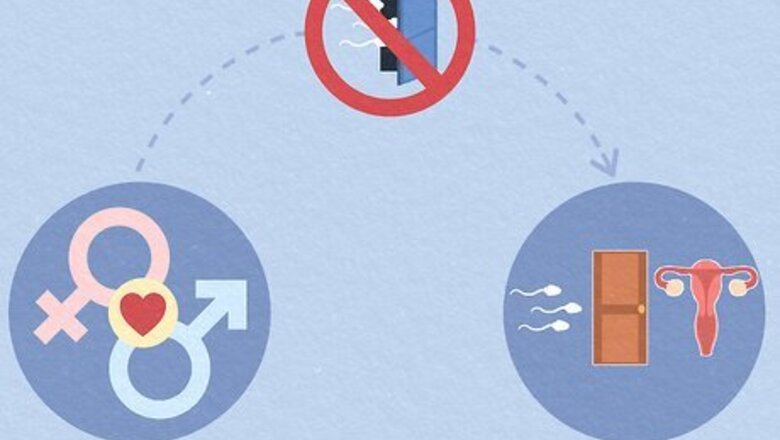
views
What is the pull-out method?
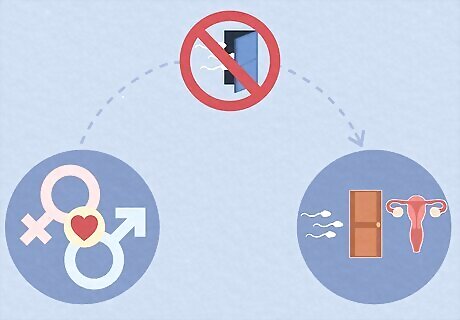
“Pulling out” means removing the penis from the vagina before ejaculating to prevent pregnancy. The pull-out method (also called withdrawal) is a common birth control method that some people use during sex to avoid an unplanned pregnancy. With this method, the insertive partner removes their penis from the vagina before ejaculating (cumming) to prevent any semen from entering the vagina and fertilizing an egg. The insertive partner can ejaculate outside of the vagina if they’d like, but it’s important not to get semen on the vulva (the outside parts of the vagina, including the labia and clitoris), as this can also potentially lead to pregnancy. In old-school terms, pulling out is also known as coitus interruptus (Latin for “interrupted sex”).
How effective is pulling out in preventing pregnancy?
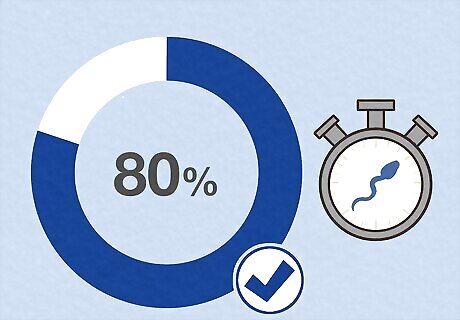
The pull-out method is about 80% effective against pregnancy. This means that approximately 20 out of every 100 people will get pregnant if they only use the pull-out method over the course of a year. Some people swear by pulling out and have used it successfully many times, while others have had pregnancy scares or even unintended pregnancies after just a few uses. The experts at Bedsider note that, at best, withdrawal is 96% effective when timed perfectly every single time. You have to be seriously in touch with your body to pull out successfully, and doing it consistently takes a lot of focus (which can be hard to do in the heat of the moment). So, even though it is a viable birth control option in many scenarios, there’s always a slight chance of unintended pregnancy with withdrawal. What causes the pull-out method to fail? Pre-ejaculate fluid (pre-cum) may carry some sperm into the vagina before ejaculation. It’s also just difficult to time and control withdrawal in the heat of the moment. Mistakes happen! What do the pros say? Check out this short clip from Bedsider explaining how the pull-out method prevents pregnancy and how likely it is to work (or not). Bedsider provides reliable, honest information about all birth control methods, including pros, cons, and real-life considerations, so you know you’re getting trustworthy guidance when it matters most.
Does the pull-out method protect against STIs?
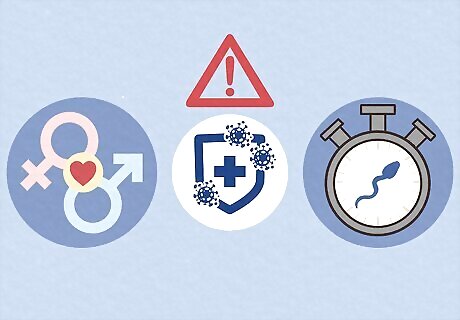
No, pulling out does not protect either partner from sexually transmitted infections (STIs). If you or your partner has an STI, the viruses, bacteria, and parasites that cause the infection can be present in your genital fluids (semen or vaginal fluids). STIs can be passed between partners during sex, even if the insertive partner pulls out before ejaculating. To protect against STIs, use a condom or internal condom (in addition to the pull-out method) to provide a barrier against germs.
Using the Pull-Out Method Effectively

Have the partner with a penis pull out before ejaculating every time. The basic premise of the pull-out method is simple: Have sex as you normally do, then remove the penis from the vagina when the insertive partner gets close to ejaculating. That partner can ejaculate somewhere else if they’d like, or they can stop stimulation until the urge passes and resume sex. Pull out a bit earlier than you think you need to. For most people with a penis, ejaculation and orgasm (that big feeling of release) happen at the same time. However, it’s possible to start ejaculating before feeling an orgasm. To be safe, pull out a few seconds sooner when you feel your climax is nearing. Consistency is key. The long-term success of pulling out ultimately depends on timing it perfectly every single time. Don’t let your guard down because you’ve “done it 100 times” before. As we said earlier, mistakes happen! What do the pros say? Watch this short video from Bedsider explaining exactly how to execute the withdrawal method of birth control safely. They take real-life scenarios and usage into account—not just clinical facts—to give you a realistic idea of how it’ll actually work.
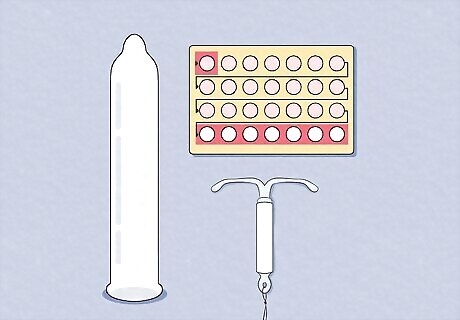
Pair the pull-out method with condoms and/or other contraception. For more protection against pregnancy, pair the pull-out method with condoms, an intrauterine device (IUD), or another effective form of contraception. Typical condom use is 87% effective at preventing pregnancy, and condoms are the only way to protect yourself from STIs (besides abstinence). When you pair condoms and pulling out, your chances of pregnancy or infection are lower. Other birth control methods, like the IUD and implant, are even more effective at preventing pregnancy (about 99%). However, they do not prevent STIs like condoms do. What do the pros say? Watch this TikTok clip from Bedsider explaining how timing is everything with the pull-out method—and why having a backup option is a must.
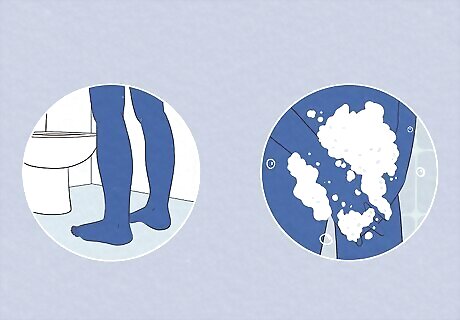
Urinate and clean the tip of your penis before having sex a second time. If you’ve successfully pulled out once and are considering round 2, pee first to flush out any remaining fluid with sperm from your penis. Then, clean the head to make extra sure that there is no lingering semen that could lead to accidental fertilization.
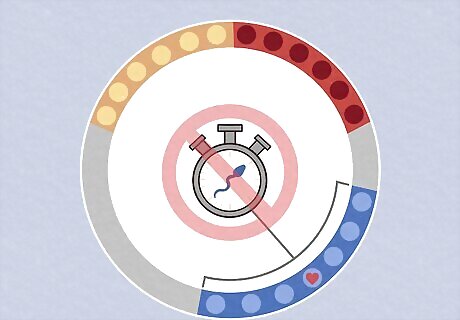
Do not use the pull-out method near ovulation time. People with uteruses are more likely to get pregnant before and during ovulation, when the ovaries release an egg. Most people ovulate about 2 weeks before their period, so track your ovulation to avoid sex on fertile days. Even a small amount of pre-ejaculate or semen can cause pregnancy, so you definitely don’t want to risk it with the pull-out method.
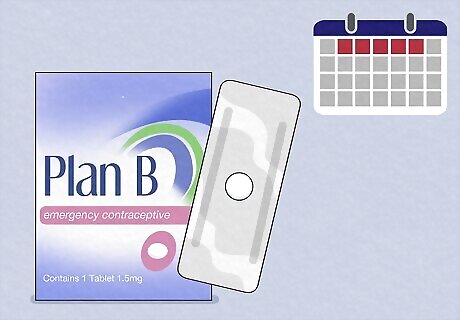
Consider keeping emergency contraception, like the morning-after pill, on hand, just in case. The morning-after pill (like Plan B) is an emergency contraceptive that can prevent pregnancy if you take it within 3-5 days of sex, depending on the exact medication (the sooner you take it, the more effective it is). If withdrawal isn’t timed just right and you’re worried about pregnancy, consider taking a morning-after pill as an extra precaution. Morning-after pills are available over the counter at most pharmacies and drugstores and don’t require a prescription. If you’re concerned about the risks or potential side effects of a morning-after pill, consult your doctor for guidance before taking one. Depending on your weight, some forms of emergency contraception may be better for you than others. Many morning-after pills (including Plan B, Take Action, and My Way) are most effective for those under 165 pounds (75 kg). The medication ella (which requires a prescription) is effective for those up to 195 pounds (88 kg). The copper IUD (Paragard) is effective regardless of weight.
Pros & Cons of the Pull-Out Method
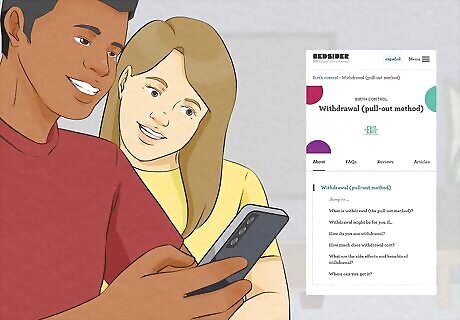
Pros: The pull-out method is free, easy to use, and has no side effects. Compared to other birth control methods, pulling out is very accessible and easy to use and understand. There are a lot of reasons you might want to explore the pull-out method, including: No cost. No doctor visits or prescriptions needed. No inserted devices, patches, or pills to remember to take. No side effects. Preserves the spontaneity of sex. Alignment with religious beliefs about contraception. Is the pull-out method for you? According to the pros at Bedsider, pulling out is a valid choice if you’re not worried about STIs, are OK combining it with another form of contraception, and/or you’re comfortable with putting in the effort to make it work.
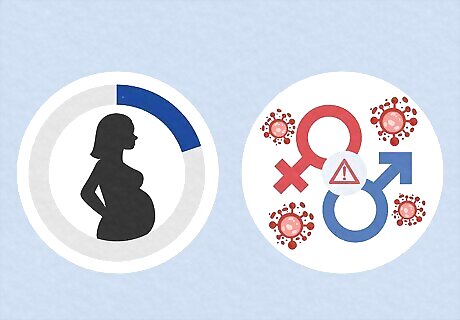
Cons: The pull-out method does not 100% protect against pregnancy or STIs. The one big caveat is that pulling out is not the most effective way to prevent pregnancy, and it doesn’t offer any help when it comes to preventing STIs. Some reasons you might want to reconsider pulling out and explore other contraception methods include: No protection against STIs. Only 80% effective at preventing pregnancy. Makes sex potentially stressful or distracting. Puts the responsibility for birth control on the partner who has no risk of getting pregnant (the partner with the vagina cannot do anything to prevent their own pregnancy).
Other Contraception Methods
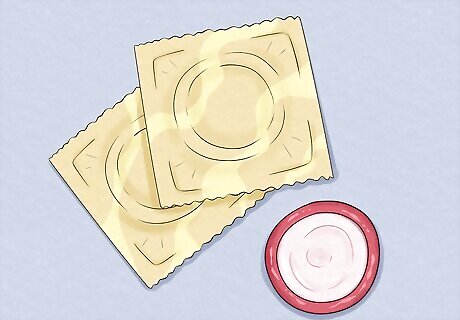
Condoms Condoms are usually made of latex, plastic, or lambskin and are placed over an erect penis to prevent semen from entering the vagina. They’re the only form of contraception that protects against STIs and are about 87% effective against pregnancy. They’re available at nearly all drugstores, pharmacies, and big-box stores. Pros: Inexpensive, easy to find, effective against pregnancy and STIs. Cons: Can tear or rip, must use a new one every time you have intercourse. How do they compare to pulling out? Condoms are more effective at preventing pregnancy and STIs, and are also low-cost (although not free like withdrawal). Not sure what the best birth control is? Check out this side-by-side comparison tool from Bedsider to learn about different methods, compare them, and find what works best for you!
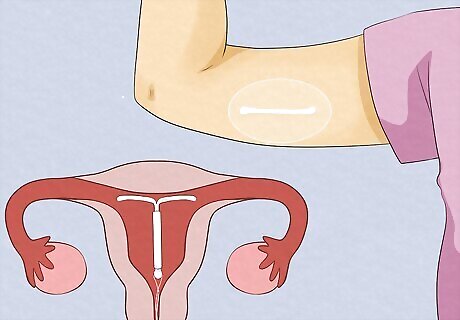
Intrauterine devices (IUDs) and birth control implants These devices are inserted in the uterus (IUD) or underneath the skin in the arm (implant). All IUDs and the implant work by making it difficult for sperm to meet an egg, which can lead to fertilization and pregnancy. These devices can last for several years before needing to be replaced (depending on the exact device you’re using) and are nearly 100% effective at preventing pregnancy. Pros: Over 99% effective at preventing pregnancy, can be left in place for years after insertion. Cons: No protection from STIs, requires a prescription, must be inserted in-office, causes potential side effects like irregular bleeding, headaches, and sore breasts. How do they compare to pulling out? IUDs and implants are way more effective at preventing pregnancy, but they require a doctor’s visit and must be inserted by a provider (which can sometimes be painful). They need to be replaced every few years, but otherwise, you don’t have to think about them (like you do with pulling out).
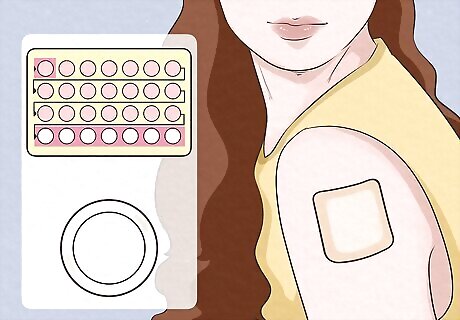
Birth control pills, patches, and rings Hormonal contraception, like birth control pills, uses the hormones estrogen and/or progestin to stop ovulation. Most pills must be taken daily to be effective, while patches must be replaced weekly, and vaginal rings (like a NuvaRing) must be replaced monthly. If you forget to take a pill or replace a patch or ring, your protection weakens and you are more likely to get pregnant. Pros: 93% effective at preventing pregnancy Cons: No protection from STIs, must be replaced or taken regularly to maintain efficacy, requires a doctor’s appointment and prescription, may cause side effects like breast tenderness, nausea, headaches, and irregular periods. Many telehealth providers can prescribe birth control during a virtual appointment as well. No Pap smear or pelvic exam is necessary—just answer some questions about your blood pressure and health history. Often, you can get your prescription delivered. How do they compare to pulling out? Hormonal contraception is more effective at preventing pregnancy than both pulling out and condoms, but is similarly ineffective at blocking STIs. It also requires more effort and consistency (like scheduling doctor’s appointments and remembering to take a pill at the same time each day or replace the patch or ring at the right time).
Final Thoughts
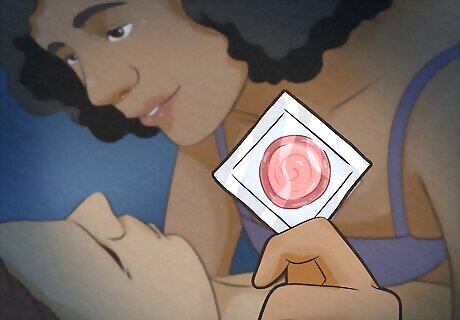
The pull-out method can prevent pregnancy, but there are more effective ways. At the end of the day, pulling out is definitely better than nothing and can be a valuable (and easy) strategy for preventing a pregnancy, especially in the heat of the moment or when condoms aren’t available. However, other forms of birth control like condoms, IUDs, implants, pills, and patches can offer greater pregnancy protection, and condoms are the only contraception that also protects against STIs. Pulling out is a free and prescription-free contraception that many couples have used successfully. Just remember that it isn’t 100% guaranteed to protect you. For the best protection, use the pull-out method with another form of contraception, like condoms or the pill.




















Comments
0 comment